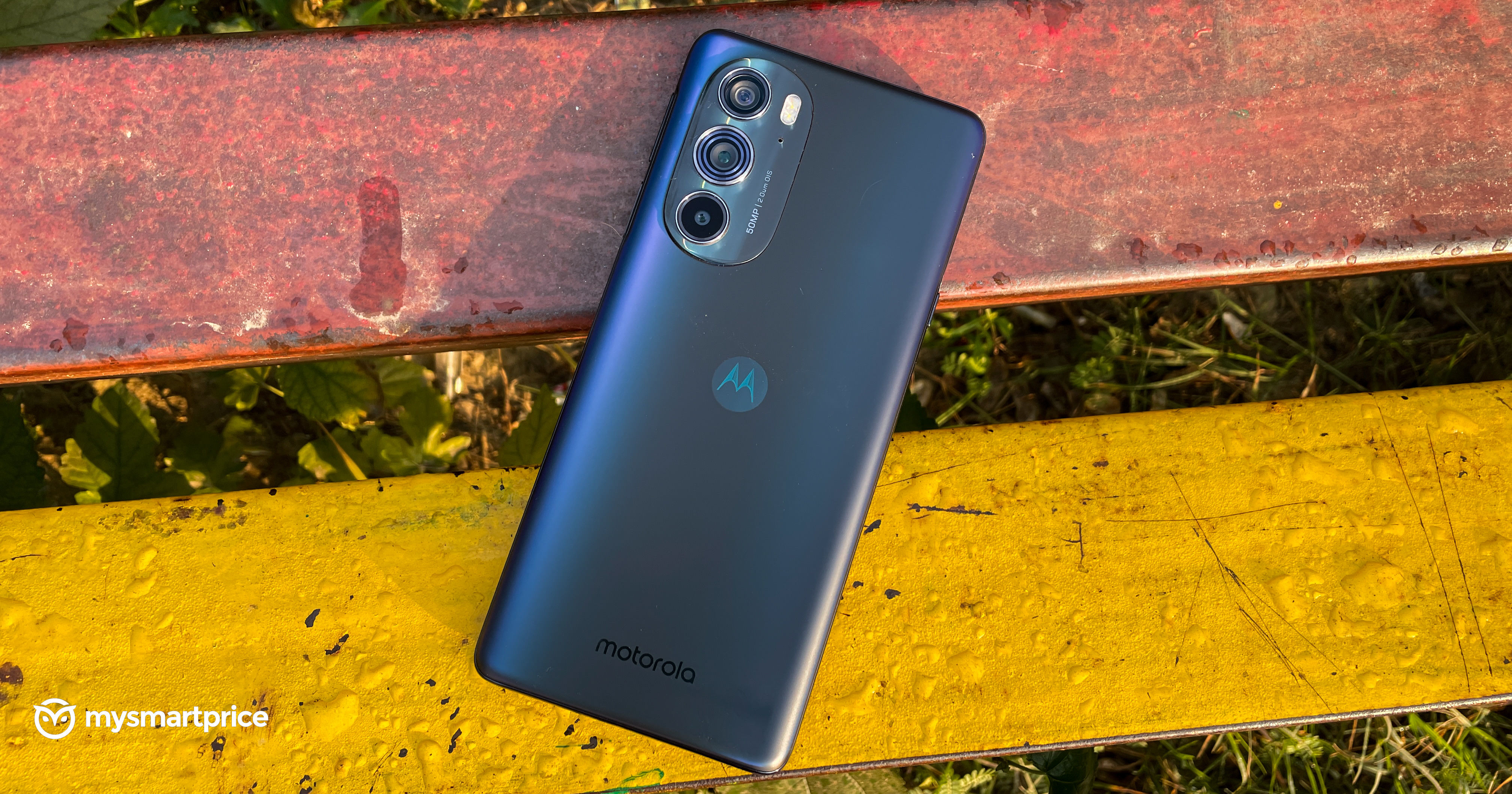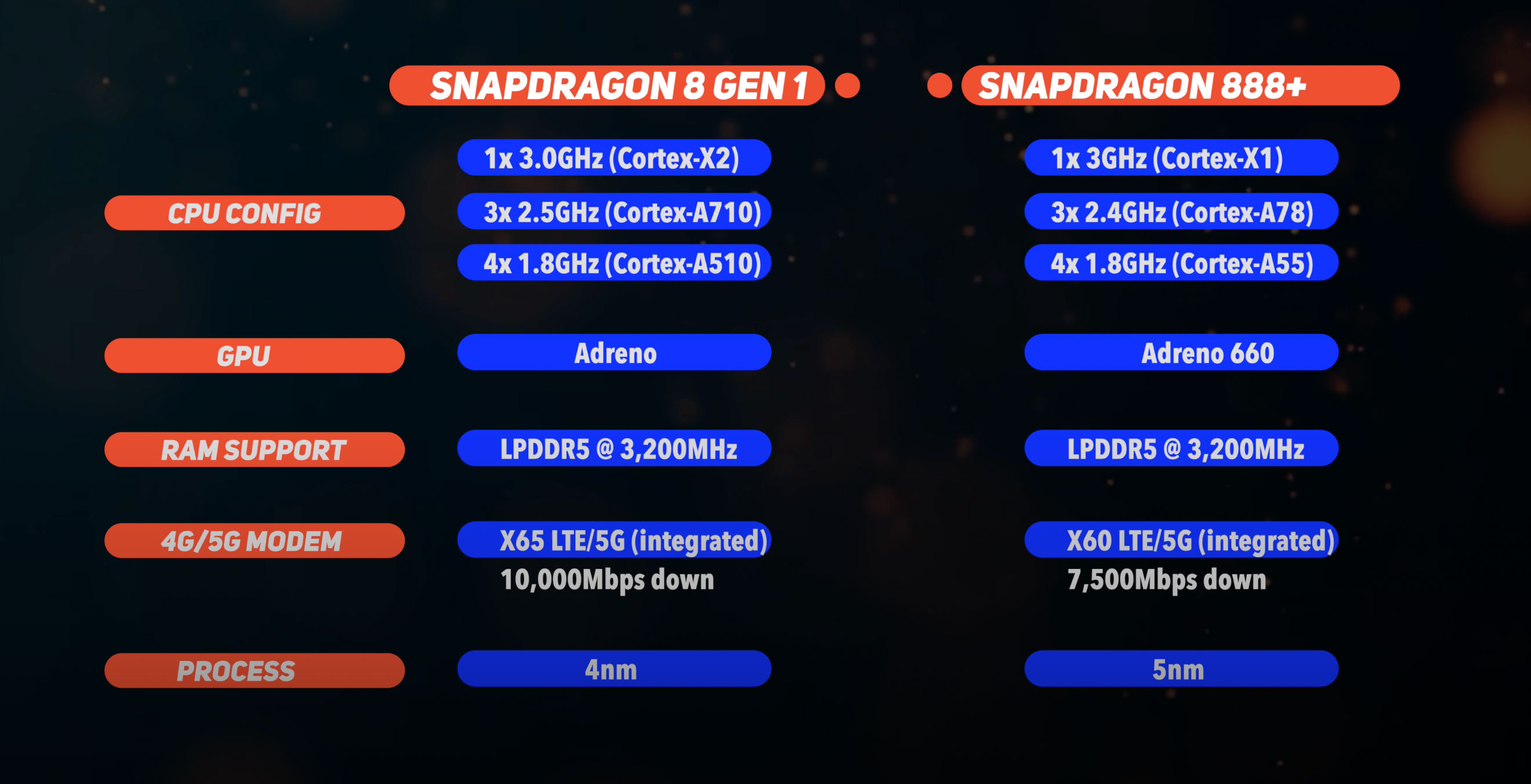
We sourced the Moto Edge X30, the world’s first, commercially available smartphone powered by the Snapdragon 8 Gen 1 platform, and boy does this get hot!
But before we go back there, let’s take a moment to learn what the Snapdragon 8 Gen 1 has to offer. We all know the 8 series is Snapdragon’s most powerful avatar that powers the most expensive Android smartphones of the day. And apart from a really confusing change in name, there’s a lot that has changed inside.
Snapdragon 8 Gen 1: What’s New?

The Snapdragon 8 Gen 1 is made on Samsung’s 4nm manufacturing process, promising better power efficiency, but more importantly, 2022’s flagship chipset unlocks the performance gains from the Arm v9 instruction set.
It’s got new cores in the same tri-cluster arrangement. A big Cortex X2 core, clocked at 3GHz for the really intensive tasks, followed by three Cortex A710 mid cores clocked at 2.5GHz, to compute semi-intensive tasks, and four Cortex A510 cores clocked at 1.8GHz for everything else.
There’s also a new GPU that Qualcomm now calls just Adreno. — no number after it to denote generational shifts, but it now supports more advanced rendering features like variable rate shading, 10-bit HDR in games, 144 FPS gameplay and more. Qualcomm promises a 30 percent gain in GPU performance, and 20 percent improvement in CPU performance followed by a 30 percent reduction in power intake.
So a new manufacturing process, a new instruction set, and well, a new name too — Just how good can the Snapdragon 8 Gen 1 be?
Snapdragon 8 Gen 1 Benchmark Results
We tested the Snapdragon 8 Gen 1 on the Moto X30 with a series of synthetic benchmark tests and stress tests, along with some real world usage. I had the OnePlus 9R running on the Snapdragon 870, and the Vivo X70 Pro+ running on the Snapdragon 888+ for comparison.
But the thing to note here is, the Moto X30 is a rushed device. It doesn’t fully explore the capabilities of the brand new chip. Things like Snapdragon 8 Gen 1’s Always-on camera isn’t put to use, and you can’t even shoot 1080p 60fps videos from the camera. But we’re not going to go into how the Moto X30 is. That’s for if and when it launches in India. Our focus today is solely on the performance of the Snapdragon 8 Gen 1.

Our first test is the AnTuTu benchmark. We ran it thrice to see how the scores average out, and while the Snapdragon 8 Gen 1 almost touches the 1 million score mark, it’s average score was just 12% better than the Snapdragon 888+. The breakdown of the total score reveals the GPU creates a bigger difference than the CPU on the Snapdragon 8 Gen 1.

Next up is the Geekbench 5 CPU test. I feel this test isn’t optimised for the Armv9 architecture yet, as the chipset info it shows is of armv8, but we ran it thrice regardless, and the results were a tad disappointing for the SD8 Gen 1. After three runs, the average single-core and multi-core scores were almost similar. There’s something probably wrong with this test and we’re gonna wait for Geekbench 6 to validate it.

Moving on, we are going to put the Moto X30 through the mighty 3DMark Wildlife Stress Test. This test gives us a good idea of both the chipset’s graphical prowess and its thermal capacities. And this is where the Snapdragon 8 Gen 1 shines. It scores a whopping 41% higher than the Snapdragon 888+, but more importantly maintains a good 70% stability after 20 runs. Unfortunately, there is a cost to this stability. The Moto X30 hit temperatures above 50 degrees during the course of this test, indicating Snapdragon’s heating issue is here to stay.
The last test among the synthetic benchmarks is the CPU Throttling test. The app keeps the CPU engaged for 30 minutes with complex computations to see whether it can sustain the high performance it’s designed for, for that long. And the Snapdragon 8 Gen 1 throttled to 80% of its max performance, while the Snapdragon 888+ throttled to only 85% of its max performance.
Real World Usage
So far, the synthetic benchmarks proved a little unimpressive for the Snapdragon 8 Gen 1. But synthetic benchmarks doesn’t always hold true in the real world. Here, the Moto X30 actually feels pretty smooth paired to the 144Hz AMOLED display, along with LPDDR5 RAM and UFS 3.1 storage. It feels just as fast as the fastest flagship out there in regular use, and Android 12 feels nice and smooth on this phone. But for a true taste of the real world, we played a few games.
First up, BGMI. The Moto X30 can run it at UHD graphics with Ultra FPS, maxing out the game’s graphics. The game itself runs butter smooth with no janks or jerks, or even a drop in frame rates. The surface temperature after 30 minutes of gaming clocked 41 degrees, which was decent.
Next, CoD Mobile. Here the Moto X30 can hit Very High graphics with Max FPS, same as the Vivo X70 Pro+. While the new chip doesn’t unlock newer ground in graphics in the game, the performance is just as smooth, if not slightly better. You won’t be able to tell the difference here, but it did clock a higher temperature of 40 degrees as compared to the Vivo X70 Pro+ which clocked 38 degrees after 30 minutes of gaming.
Finally, there’s Genshin Impact, a really intensive mobile game that puts flagship GPUs to good use. The Snapdragon 8 Gen 1 performs really well, offering super smooth frame rates with no stutter in any of the games we tested, and in fact, all of them ran with everything maxed out. Of course, that’s expected since this is the best at present, but more importantly, the heating. Yes, it exists even in real world tests. The phone did heat up quite a bit while playing Genshin Impact, clocking beyond 45 degrees, but not so much during BGMI and CoD Mobile.
Summing it up, the Moto X30 gives a disappointing first impression of the Snapdragon 8 Gen 1. Like I mentioned before, this could be the fault of the phone itself and not neccessarily the chipset. It feels like a rushed product, with Moto hardly making any use of all the varied capabilities of the Snapdragon 8 Gen 1. Still, from what we saw, the CPU performance isn’t much to boast about, and frankly, at the top end, there’s really no app or game that really stresses the CPU for long. But more importantly, we see big gains in GPU performance, that translates fantastically to high octane gaming. If not for anything, you should be drooling over the Snapdragon 8 Gen 1 phones simply for their gaming performance next year.













